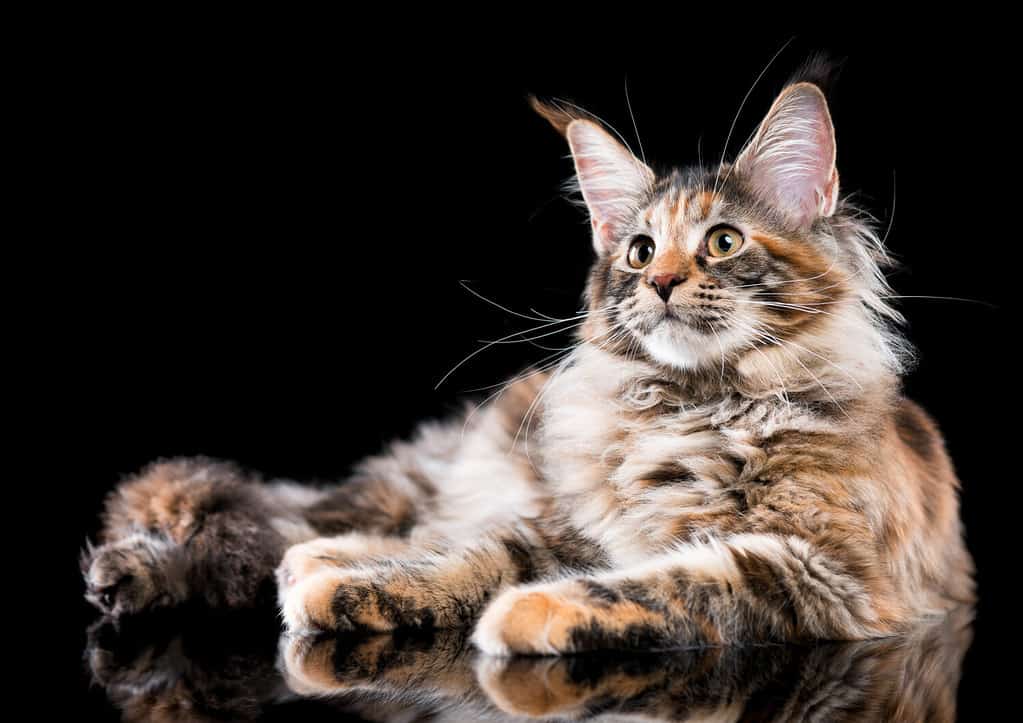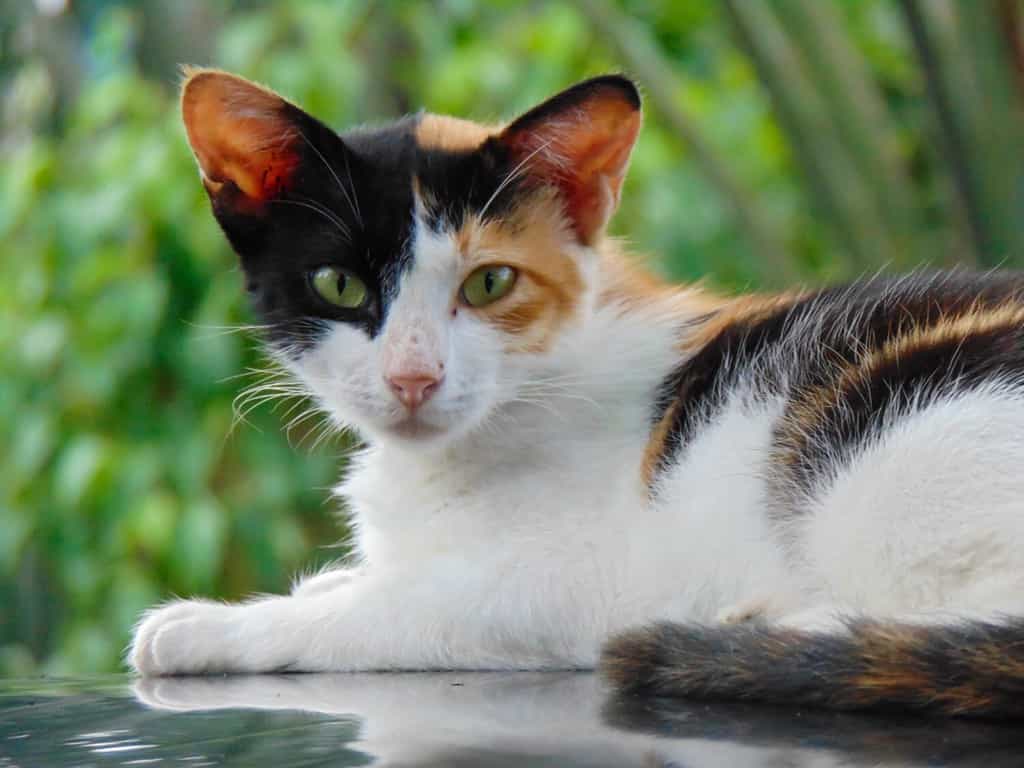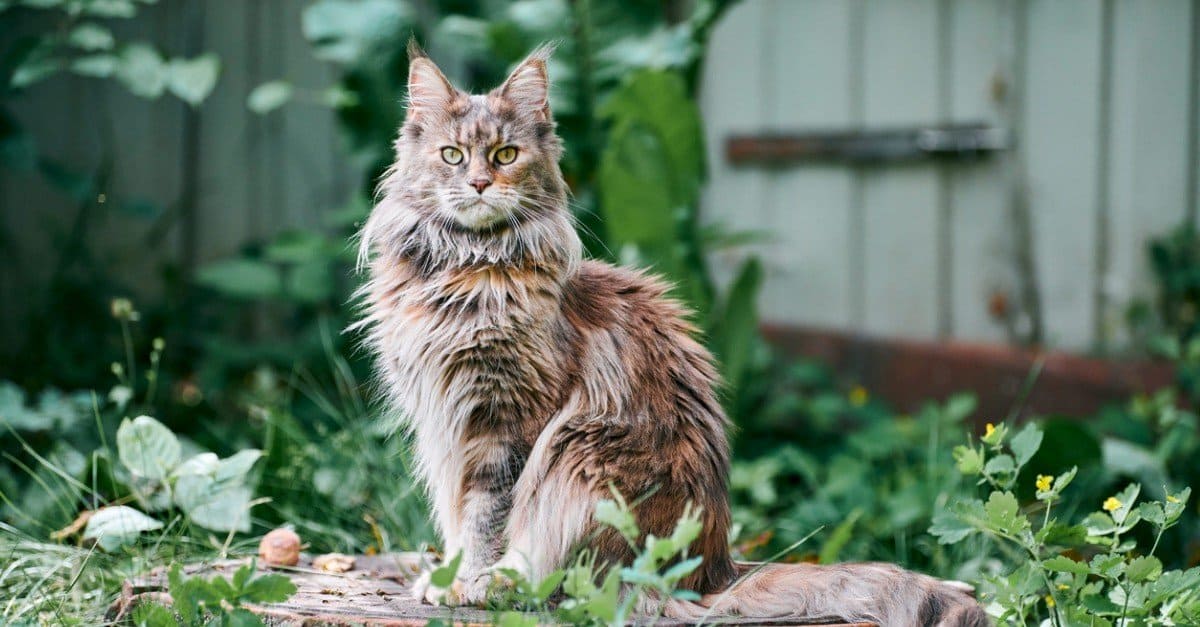With a wide variety of domestic cats, the possibilities for fur color and type seem endless. Fluffy cats, sleek cats, and even hairless cats are all options when picking out a new feline friend. Fur colors include startling white, dark inky black, and everything in between. There is one color combination that is extra special.
What Is Tortoiseshell Coloring in Cats?
Tortoiseshell refers to the coloring of the cat’s fur. It is any combination of two colors other than white, but the combination that comes to mind most is black and ginger. They can be any combination of two colors, however. The darker color is typically black, dark brown, or gray. Sometimes certain shades of gray are described as blue. The lighter color is often red, orange, gold, or even cream.
Another key feature in tortoiseshell cats, also called torties, is their split-face coloring. One-half of the face is dominated by the darker color and the other half by the lighter color. The dividing line falls close to the cat’s nose, usually between its eyes. Not all tortoiseshell cats have this pattern, however, it is quite common.

The combination of fur color in tortoiseshell cats makes them very striking and popular with pet owners.
©DenisNata/Shutterstock.com
What Breed Are Tortoiseshell Cats?
Tortoiseshell cats can be any breed. Similar to a calico pattern, the name tortoiseshell refers to the coloring rather than a specific breed. Any breed can have the resulting fur color.
Some torties have limited white patches or speckles among their fur. This happens when the pigment that dictates fur color isn’t present in those cells during development. Generally, tortoiseshell cats have more dark patches. Calico cats, on the other hand, have plenty of white patches, as well as tortoiseshell coloring. They are usually considered two different color patterns, however.
Calico cats look similar to torties. Both have multiple colors in their coat. The main difference is that calicos have white as well as two other colors, often black and ginger. They often have similar split-face coloring, although the addition of white fur comes out strong in their face. Although not required to be considered a calico, most of these cats have black and ginger (or some other combination) over their eyes and white on their adorable noses and chins.

Calico cats have tortoiseshell coloring as well as white fur. They are a specific tri-color cat.
©Mawaddah F/Shutterstock.com
Determining Fur Color in Cats
So why is this pattern so unusual in male cats? The answer has to do with genetics.
Torties are almost always female. Female mammals have XX chromosomes. One of the X chromosomes is inactivated and the result is that the gene for color in the active X chromosome dictates that cat’s fur color. In torties, the fur color starts to develop before the inactivation process completes. The result is two colors present in the cat’s fur.
Male cats have XY chromosomes. The X chromosome inactivation process does not occur, since there is only one X chromosome. The gene for fur color is dictated by the specifics of the X chromosome. Occasionally, male cats have XXY chromosomes. In these cases, the process of X chromosome inactivation occurs just like in females. That alone is not enough to produce a male tortie. The cat must have XXY chromosomes and the cells responsible for the development of pigment have to move to the skin early in the cat’s development and mingle together. This happens in roughly 1 in 3,000 male cats, making the coloring very rare.
Male tortoiseshell cats are almost always sterile. Because of this, the gene that may cause tortoiseshell patterns doesn’t get passed down to younger generations. Female torties can have kittens, which may be torties or solid-colored.
Torties tend to live long, healthy lives like any other type of cat. With the right care, you’ll be able to love your tortie for years.

Torties are almost always female.
©Sheila Fitzgerald/Shutterstock.com
Are Tortoiseshell Cats Lucky?
If you enjoy the love of a pet, you can count yourself lucky. But some superstitions give extra credit to torties. If one comes into your home, some cultures believe that good luck will follow. Dreaming of a tortoiseshell cat can also mean good things are to come. They are generally considered good omens.
This is especially interesting due to their reputation as feisty, temperamental cats. They can be fiercely independent and vocal when they want something. Tortie owners describe this attitude as “tortitude.” But this reputation may just be due to the individual personalities of cats rather than any genetic aspect related to their tortoiseshell coloring. Or perhaps torties have come to learn that they are just so darn adorable that they can get away with any kind of mischief. Either way, you can be sure that this cat will have plenty of fun personality to go around.
One of the bigger factors that can play a role in personality is the actual breed of cat. Some breeds, such as Maine Coons, are more sociable than others. They can also be louder to get their human’s attention and generally want more interaction. This isn’t the case with every pet, however, and the socialization and love that you show will also shape their personality.

Tortoiseshell is just one of the types of
Siberian
cat colorings.
©Heidi Bollich/Shutterstock.com
Thank you for reading! Have some feedback for us? Contact the AZ Animals editorial team.








